A) ![]()
B) CH3CH2CH2CH2OH + PBr3
C) ![]()
D) CH3CH2CH2CH2OH + Br2
E) Two of these choices.
Correct Answer

verified
Correct Answer
verified
Multiple Choice
The product(s) of the following reaction 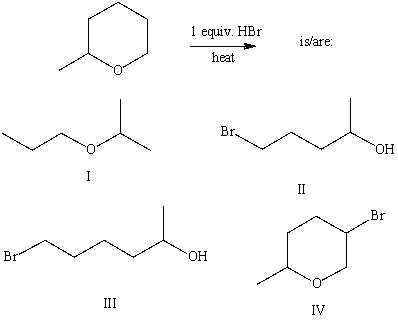
A) I
B) II
C) III
D) IV
E) None of these choices.
Correct Answer

verified
Correct Answer
verified
Short Answer
A compound or ion that prefers a nonpolar environment to an aqueous one is said to be ___.
Correct Answer

verified
Correct Answer
verified
Multiple Choice
What is the nucleophilic species involved in the initial step of the reaction below? 
A) "-OH"
B) "Hg(OAc) 2"
C) "H2O"
D) "cyclopentene"
E) "the THF/H2O complex"
Correct Answer

verified
Correct Answer
verified
Multiple Choice
The product(s) of the following reaction 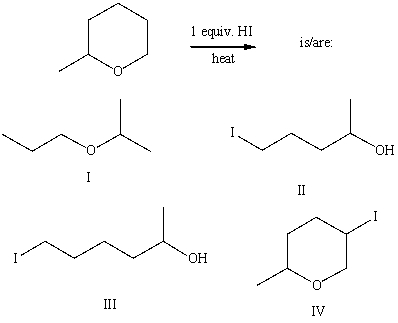
A) I
B) II
C) III
D) IV
E) None of these choices.
Correct Answer

verified
Correct Answer
verified
Essay
Finish the following acid-base reaction and predict if it will proceed in the forward direction: 
Correct Answer

verified
Correct Answer
verified
Multiple Choice
What would be the major product of the following reaction sequence? 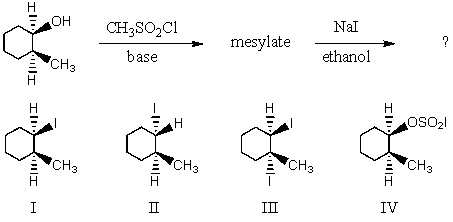
A) I
B) II
C) III
D) IV
E) An equimolar mixture of I and II.
Correct Answer

verified
Correct Answer
verified
Multiple Choice
A correct IUPAC name for isobutyl alcohol is:
A) 2-Methyl-1-propanol
B) 2-Methyl-1-butanol
C) 1-Methyl-1-propanol
D) 1,1-Dimethyl-1-ethanol
E) 3-Methyl-1-propanol
Correct Answer

verified
Correct Answer
verified
Multiple Choice
Assuming an overall exothermic process,select the potential energy diagram that best represents the following reaction: 
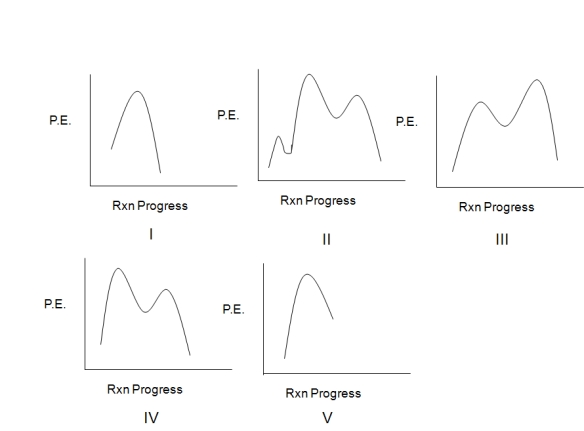
A) I
B) II
C) III
D) IV
E) V
Correct Answer

verified
Correct Answer
verified
Multiple Choice
Which of the following could be used to synthesize 2-bromobutane?
A) ![]()
B) ![]()
C) ![]()
D) ![]()
E) More than one of these choices.
Correct Answer

verified
Correct Answer
verified
Essay
Predict the product of the following reaction: 
Correct Answer

verified
Correct Answer
verified
Essay
Propose a mechanism for the following transformation: 
Correct Answer

verified
Correct Answer
verified
Multiple Choice
What is the relationship between alcohols I and II? 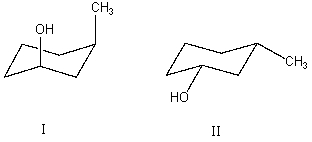 They are:
They are:
A) different conformations of the same compound.
B) constitutional isomers.
C) enantiomers.
D) diastereomers.
E) identical.
Correct Answer

verified
Correct Answer
verified
Essay
Complete the following reaction sequence,giving structural details of all key intermediates: 
Correct Answer

verified
Correct Answer
verified
Multiple Choice
Select the structure of the major product formed from the following reaction. 
A) I
B) II
C) III
D) IV
E) V
Correct Answer

verified
Correct Answer
verified
Multiple Choice
![is properly named: A) (S) -bicyclo[1.1.1]octan-2-ol B) (S) -bicyclo[2.2.2]octan-2-ol C) (R) -bicyclo[2.2.2]octan-2-ol D) (S) -bicyclo[2.2.2]octan-1-ol E) (S) -bicyclo[2.2.1]octan-2-ol](https://d2lvgg3v3hfg70.cloudfront.net/TB5902/11eaa4bc_3dcd_8f10_9180_7d68525595bc_TB5902_00.jpg) is properly named:
is properly named:
A) (S) -bicyclo[1.1.1]octan-2-ol
B) (S) -bicyclo[2.2.2]octan-2-ol
C) (R) -bicyclo[2.2.2]octan-2-ol
D) (S) -bicyclo[2.2.2]octan-1-ol
E) (S) -bicyclo[2.2.1]octan-2-ol
Correct Answer

verified
Correct Answer
verified
Multiple Choice
What is the relationship between alcohols I and II? 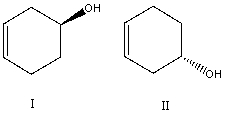 They are:
They are:
A) different conformations of the same compound.
B) constitutional isomers.
C) enantiomers.
D) diastereomers.
E) identical.
Correct Answer

verified
Correct Answer
verified
Multiple Choice
What would be the major product of the following reaction sequence? 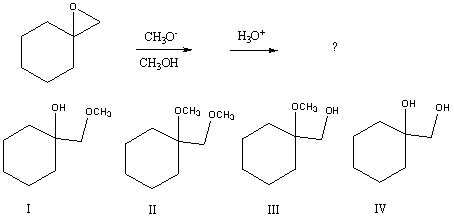
A) I
B) II
C) III
D) IV
E) Equal amounts of II and IV
Correct Answer

verified
Correct Answer
verified
Multiple Choice
Which compound is a tosylate? 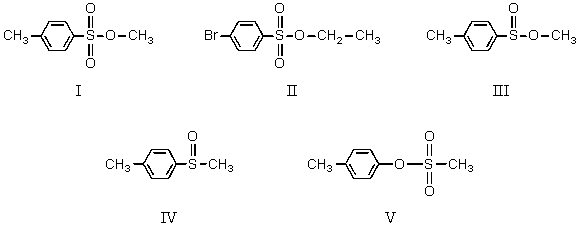
A) I
B) II
C) III
D) IV
E) V
Correct Answer

verified
Correct Answer
verified
Multiple Choice
Which of the following could be used to synthesize 2-iodobutane?
A) CH3CH2CH CH2 + I2(aq)
B) CH3CH2CHOHCH3 + HI
C) CH3CH2C CH + HI
D) CH3CH2C CH + I2
E) None of these choices.
Correct Answer

verified
Correct Answer
verified
Showing 161 - 180 of 256
Related Exams